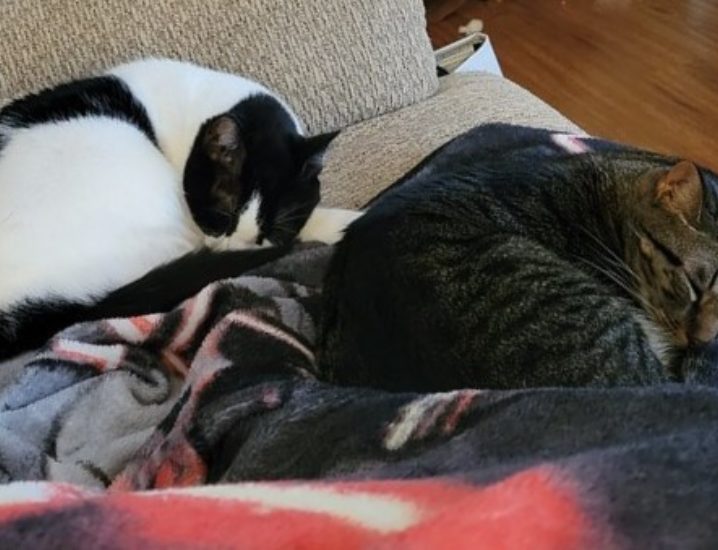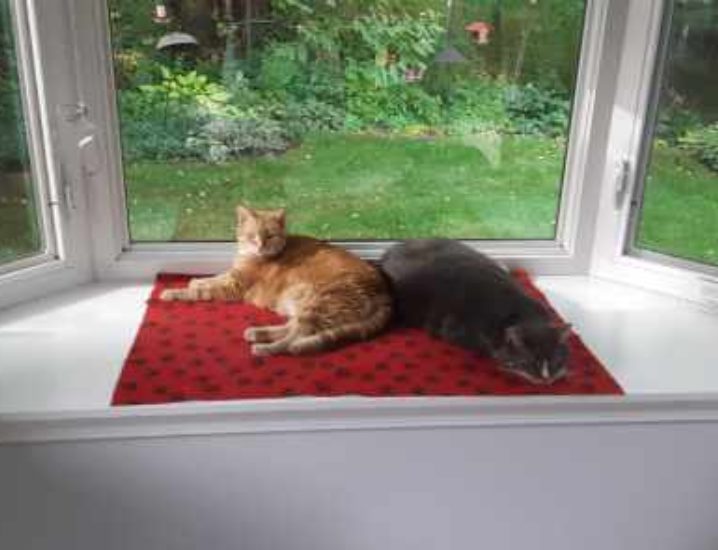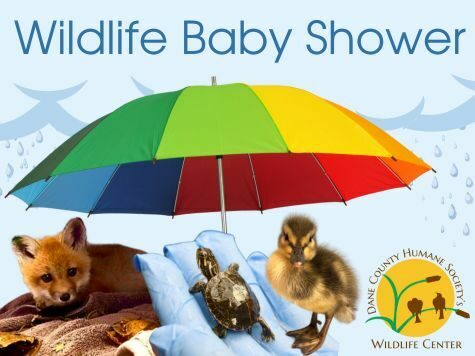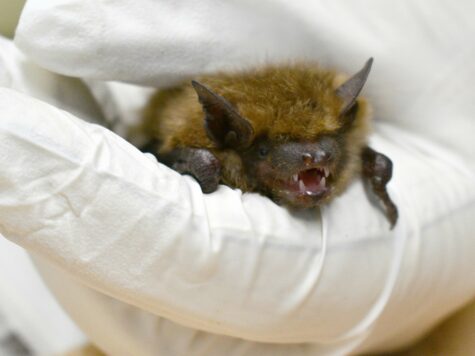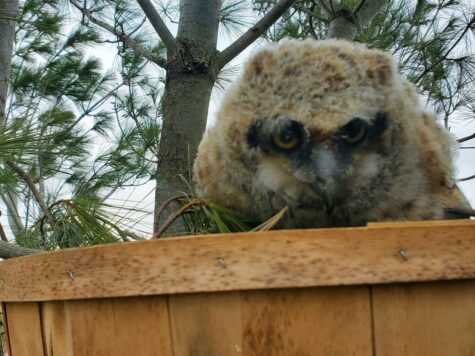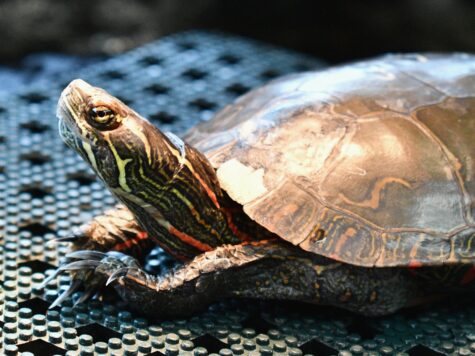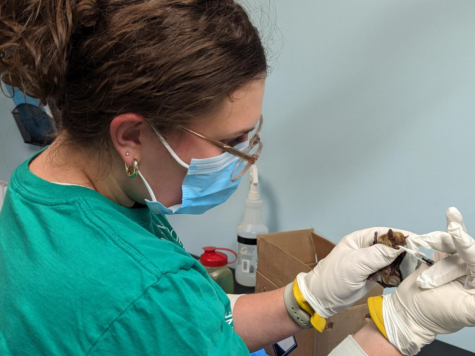“I think being a bonded pair made the adjustment much easier coming into our home. They love each other and are best friends.”
This is what Lynn and John Kryger have to say of their pair of pups, Jack and Gracie. When the dogs first arrived at Dane County Humane Society, the Canine Behavior Team noted they were a little shy and nervous around strangers, though friendly and sweet once they warmed up. Jack and Gracie were soon identified as a bonded pair. This is when two animals share a particularly close relationship, to the point that if one of them had gone home without the other, it’s very likely they both would have suffered.
“Keeping them together ensures they both are happy and relaxed,” says Jessica Marchant, DCHS’s Canine Behavior Team Supervisor. “When apart, one or both can become stressed, anxious, or even depressed.”
This phenomenon of the bonded pair is a step beyond two dogs who are friendly with each other and play together, or two kittens who snuggle together. It starts in the home, when the animals eat together, play together, sleep close to one another, and groom each other.
“They rely on each other,” says Marchant, “and when one leaves the house, for a walk or to the vet, without the other, they both show signs of stress and anxiety.”
When animals are brought to the shelter together, DCHS staff will evaluate them to determine if they’re just friendly with each other, or if perhaps they’re pair bonded. Jessica Christianson, Admitting and Foster Supervisor, explains there are even specific questions on the Feline Personality Profile, a questionnaire given to owners who surrender their cats to DCHS, which can help staff make such a determination.
If the animals are identified as a bonded pair, they’re housed together, and DCHS adoption staff do their utmost to adopt the animals out together. This policy is in place for the animals’ health and safety.
“When separated, their behavior and health can decline quickly,” explains Marchant. “They would stop eating, they wouldn’t settle or sleep, they could even completely shut down and not move. We try very hard to keep them together. If we need to ask a rescue for help, we will, just so they can stay together.”
It’s important to note that Dane County Humane Society does not adopt out canine littermates together. Pair bonding between them can occasionally cause separation anxiety, or severe aggression towards other dogs, people, or even each other, making it unsafe to send home canine littermates that could become pair bonded.
While both dogs and cats can form such close bonds, DCHS tends to see far more cats in bonded pairs than dogs. By October, DCHS had adopted out 21 bonded cat pairs.
But not all cat pairs that come to the shelter together are a bonded pair. If the cats aren’t bonded, DCHS will house them together during their stay when possible, but will not require that they go home together. Pairs of cats can take much longer to adopt out so if the cats will do well in a home without each other, it’s better for them to go home sooner, if separately.
“When we determine cats are a bonded pair, we decrease their potential adopter pool and increase their length of stay,” says Christianson. “Sometimes, the stress of the shelter can be too much for them.”
Fortunately, DCHS adoption counselors are ready to have the conversations necessary to ensure bonded pairs of animals go home together.
“Some adopters aren't necessarily looking for more than one animal or don't initially realize the animal they are interested in is bonded,” says Leah Hartman, a Senior Shelter Resource Counselor at DCHS, whose role includes counseling potential adopters about animals that best fit their family and lifestyle. “If an adopter was initially thinking about adopting just one animal but was interested in an animal that is bonded, we’ll discuss the benefits of adopting two animals.”
Leah continues, “And some adopters are specifically looking to adopt two animals, so there's not much explaining or convincing needed in those situations.”
One such adopter was Michelle Bollmann, who came to the shelter with the intention of bringing home two cats. Having had a cat previously who preferred being the only pet in the house, she was excited to find a bonded pair.
“I liked the idea they were already together, got along because they were already a pair,” she says. Her new family members, named Loki and Runa to celebrate Marvel comics and Norse mythology, adjusted quickly to their new home. “I think that’s because they were here together. Over a couple weeks, they kept getting less and less skittish.”
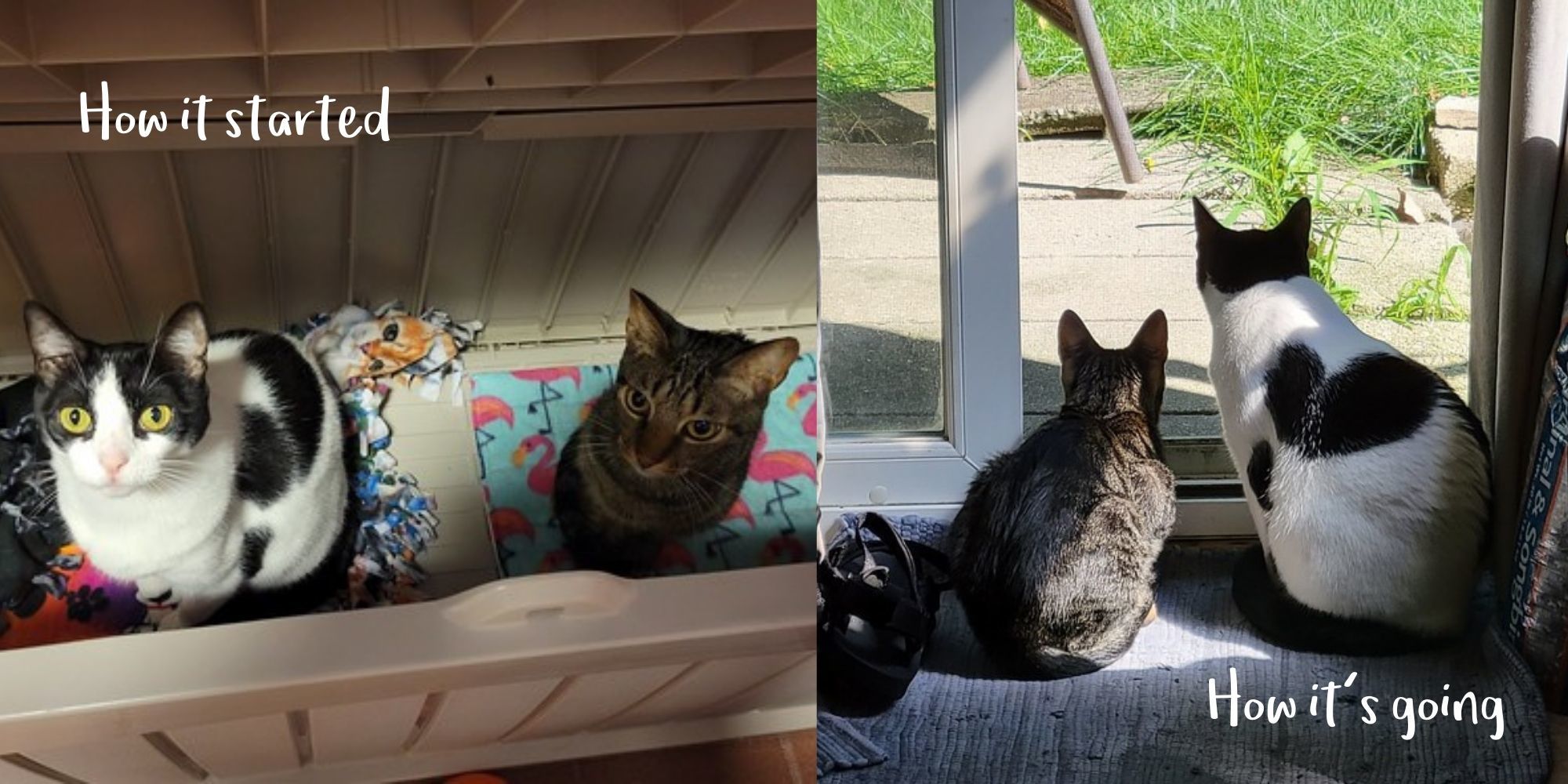
Debra Carter, cat mom of Ruby and Moe Moe, felt the same way. While she didn’t know much about bonded pairs specifically, she intentionally sought out a pair of senior cats, wanting to bring home animals who might otherwise struggle to find a new home. She noticed immediately the benefits of being bonded on their adjustment period to their new home.
“It took them a day,” she says. “They just made themselves at home. And now it’s like they’ve lived here forever. They always kind of lean on each other. It helped them probably adjust really quickly, because they were here together.”
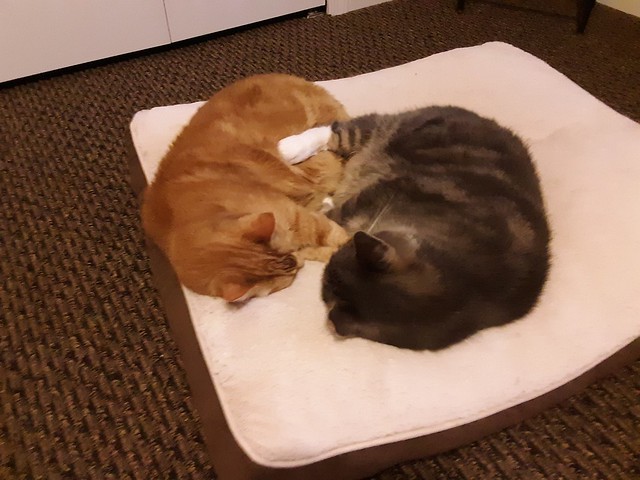
Although the driving force behind keeping bonded pairs together is stress levels, there are other benefits to having a pair of cats or dogs.
“Bonded animals have a playmate and companion, which reduces loneliness, increases confidence, and makes the transition into a new home easier,” Leah explains.
“They keep each other company,” says Michelle. “They usually have a playmate, depending if the other wants to play or not. And we don’t have to worry about leaving them alone together.”
Debra previously had a cat who loved to play. “This is how the vet explained it,” she says, “she kind of adopted me as her playmate.” Debra brought home a second cat so her current cat could have a playmate that wasn’t her. That introduction went smoothly enough, but it was still easier to bring home together two cats who were already playmates.
And if you know anything about dog-dog or cat-cat introductions, you know that if you think you’d like to have multiple dogs or cats someday, it’s much easier to start with a pair who already like each other.
“In addition, their personalities and preferences are often complementary,” Leah continues. “For example, one animal is shy but likes cuddles, and the second animal is playful but enjoys independence. It’s a win-win for adopters – and the animals!”
“They have way different personalities,” Debra says of Ruby and Moe Moe. “One is a snuggler and a lap cat, the other is a little more aloof, but together, they’re just snugglers.”
Michelle says, “Runa is still a little skittish, while Loki is the energetic younger brother, but they both have their techniques for trouble-making.”
“They both have very different personalities,” says Lynn of her bonded pair of pups, “but I think that’s what’s so fun. Jack and Gracie have been a joy in our lives.”
Thinking of adding a pet (or two!) to your family? Check out all the animals looking for their new homes here.
Just brought home a new friend or need some advice on the one you have already? View all of our pet care resources here.

